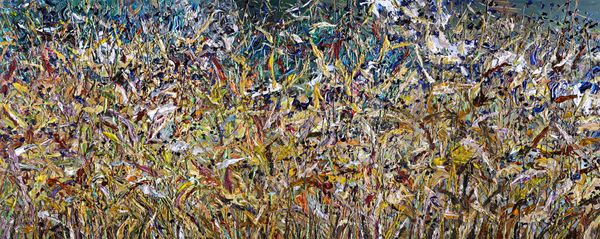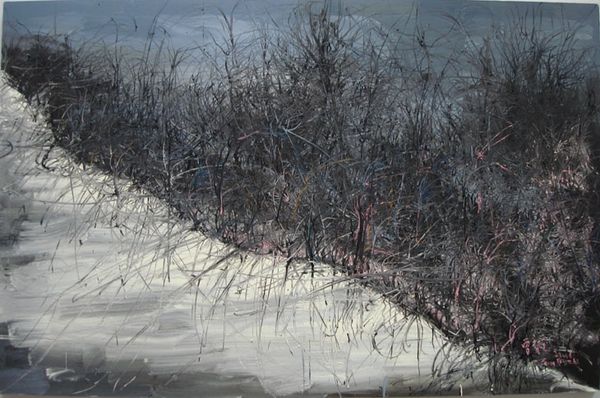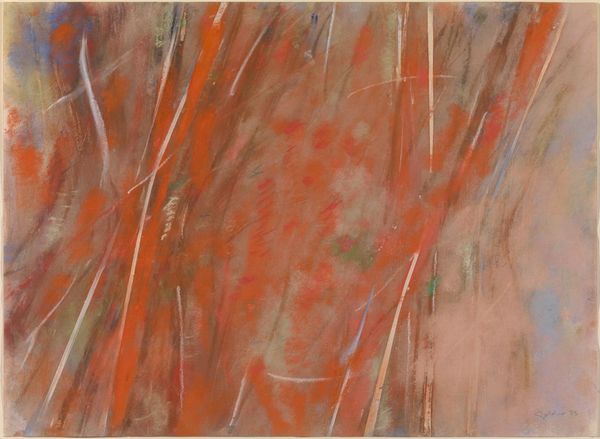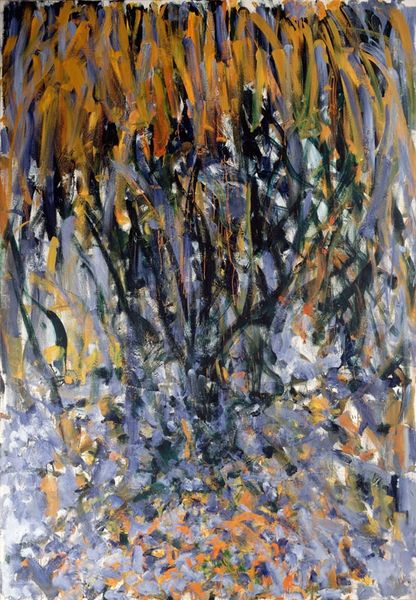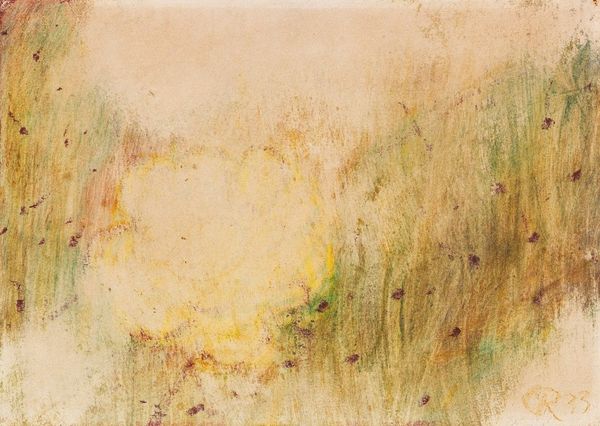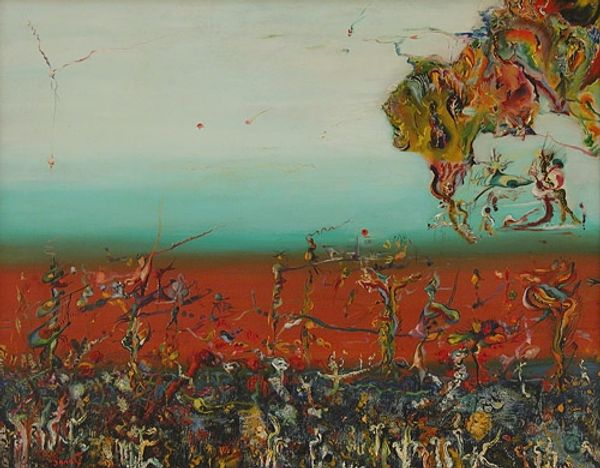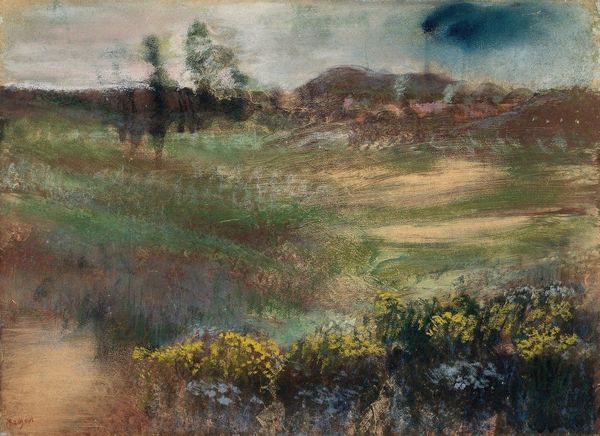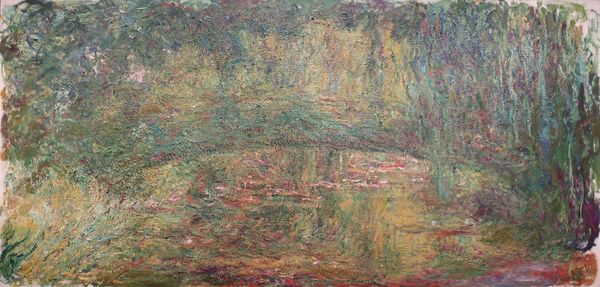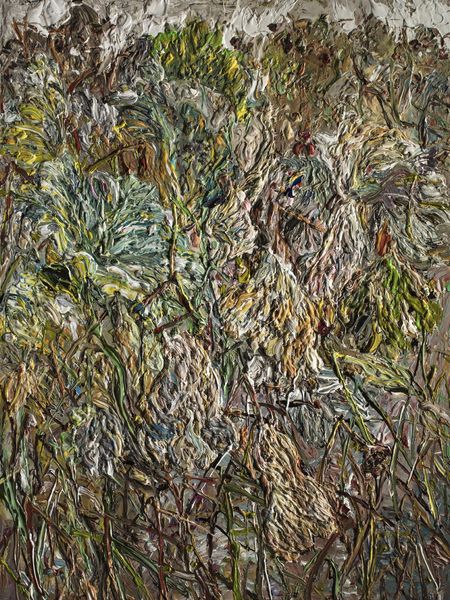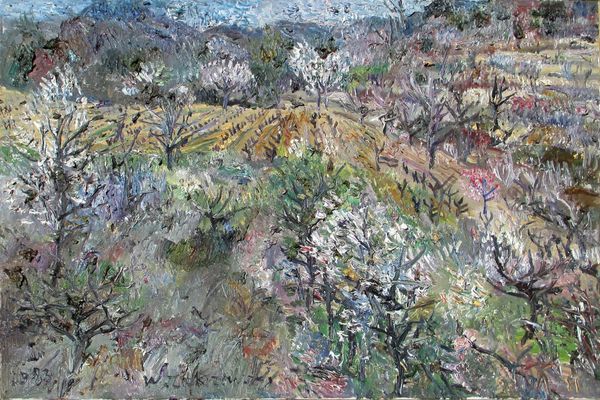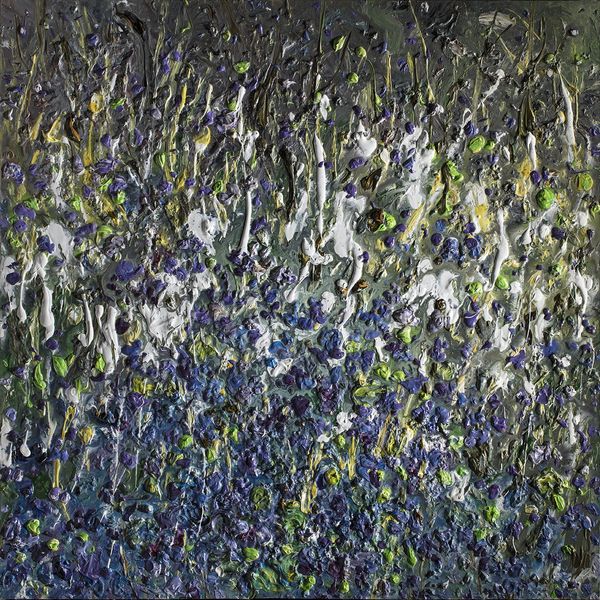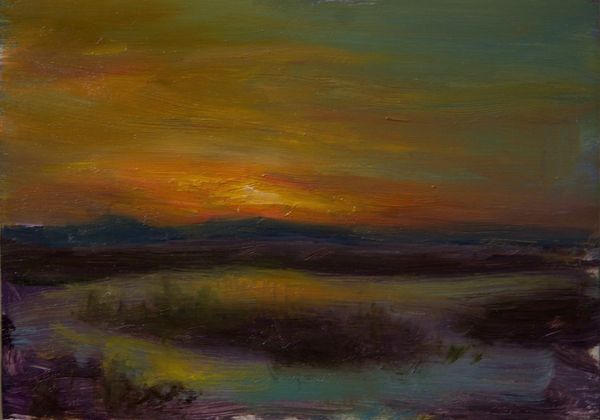
painting, plein-air, oil-paint, impasto
#
painting
#
impressionism
#
plein-air
#
oil-paint
#
landscape
#
impressionist landscape
#
oil painting
#
impasto
#
watercolor
#
realism
Copyright: Public Domain: Artvee
Editor: John Singer Sargent’s "Thistles," painted in 1883. It feels almost like a whispered secret of a landscape, a transient moment captured in oil paint. What do you see in this piece beyond its immediate visual appeal? Curator: I see a challenge to traditional landscape painting. Instead of glorifying nature or focusing on picturesque views, Sargent gives us something far more intimate and, dare I say, rebellious. These aren’t majestic mountains or sweeping vistas. They are thistles – often considered weeds, existing on the margins. He’s centering the un-centered, much like how feminist art reclaims marginalized perspectives. What does this choice of subject say about who and what society values? Editor: That’s interesting. I hadn’t considered the thistles themselves as a statement. The browns and muted colours now seem to reinforce that feeling of being overlooked. Curator: Exactly. Consider the time it was painted. The late 19th century was a period of great social upheaval and evolving class structures. Nature was also undergoing a rapid transformation through urbanization. So what does painting thistles at this specific moment signify? Perhaps it is questioning beauty standards or critiquing rampant progress that overshadows quieter realities? Editor: It almost feels like a premonition, a quiet act of resistance painted in plain sight. Curator: Perhaps. What about the application of paint? Do you notice how it's applied? Editor: It's quite loose and gestural, very different from the detailed academic paintings that were popular. There are moments where you can see the brushstrokes quite clearly. Curator: This freedom in technique also resonates with broader social changes. Sargent abandons traditional, rigid techniques, embodying a desire for more authentic expression. What impact would this approach have in that moment in time? Editor: It’s been interesting to consider the socio-political context behind such a seemingly simple landscape. I see now it's more than just thistles. Curator: Indeed. By examining the artwork in relation to intersectional concepts, we find hidden depths and can question accepted values, expanding the narrative surrounding the artist.
Comments
No comments
Be the first to comment and join the conversation on the ultimate creative platform.
